Apr 6, 2016 | coins, legislative
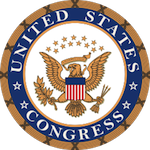 At the beginning of the month I usually summarize the numismatic-related legislation from the previous month. In March, congress spent two weeks on spring break and before that they were more concerned over what to do when the president nominated someone to the Supreme Court. Interestingly, the nomination came just as congress went on spring break.
At the beginning of the month I usually summarize the numismatic-related legislation from the previous month. In March, congress spent two weeks on spring break and before that they were more concerned over what to do when the president nominated someone to the Supreme Court. Interestingly, the nomination came just as congress went on spring break.
I visited one of my senators shortly after Merrick Garland’s nomination and the halls were empty. Although there was an attempt to have him speak with members of the senate, the building I was in was a virtual ghost town. Many of the staffers went on break to escape the general lunacy.
That does not mean there was no business. Some bills were introduced including the nited States Semiquincentennial [sic] Commission Act of 2016 (H.R. 4875). If passed, the bill will create a commission similar to the American Revolution Bicentennial Administration to celebrate the 250th anniversary of the signing of the Declaration of Independence in 2026.
As a young numismatist in 1976, there was ample opportunity to collect many tokens and medals celebrating the nation’s bicentennial. If you want proof of that, just search eBay for the number of bicentennial numismatic-related items for sale.
According to the bill, it encourages “Federal agencies to integrate the celebration of the Semiquincentennial [sic] into the regular activities and execution of the purpose of the agencies through such activities as the issuance of coins, medals, certificates of recognition, stamps, and the naming of vessels.”
Interestingly, “Semiquincentennial” does not appear to be a proper word. A “ quincentennial” would be used to celebrate the 500th anniversary of an event. I do not believe this is a proper use of the prefix “semi.” According to Wikipedia, a proper term would be “sestercentennial.”
To express 2½ in Latin it would be expressed as “half-three”. The term relates to being halfway [from the second] to the third integer. In Latin this is “Sestertius” which is a contraction of semis (halfway) tertius (third)—hence Sestercentennial.
Wikipedia notes that Semiquincentennial has been used as recently as 2015 by Brown University. Bicenquinquagenary was used by Princeton University; Reading, Pennsylvania; and Washington and Lee University.
If these places cannot decide, then maybe let congress do so. They could do worse things!
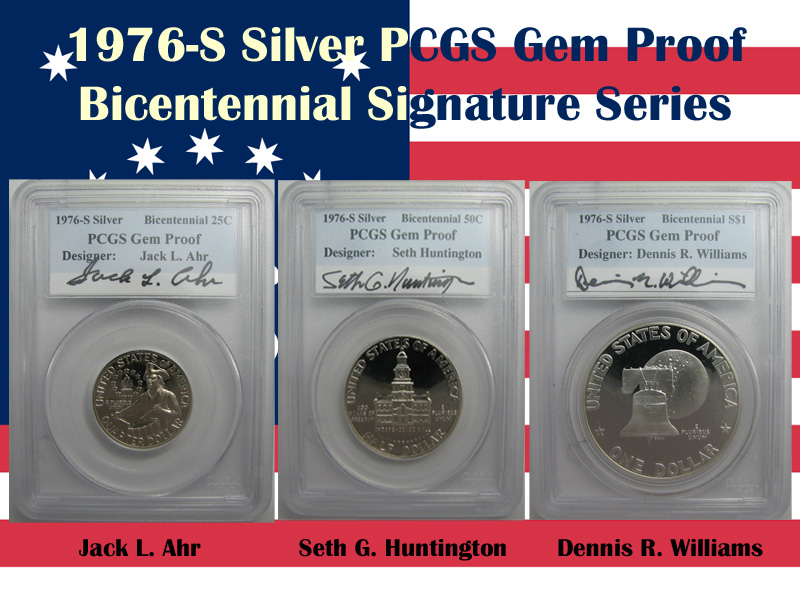
1976-S Silver Proof Bicentennial Autograph Set
Image from the author’s personal collection.
Mar 3, 2016 | coins, commemorative, legislative
 During an election year, especially one that has become very contentious, having any legislation passed would be seen as something of a miracle. This past month, there was only one bill introduced in each chamber.
During an election year, especially one that has become very contentious, having any legislation passed would be seen as something of a miracle. This past month, there was only one bill introduced in each chamber.
H.R. 4592: Naismith Memorial Basketball Hall of Fame Commemorative Coin Act
Sponsor: Rep. Richard Neal (D-MA)
• Introduced: February 23, 2016
• Referred to the House Financial Services Committee
Read the details of this bill at https://www.govtrack.us/congress/bills/114/hr4592
S. 2598: Naismith Memorial Basketball Hall of Fame Commemorative Coin Act
Sponsor: Sen. Elizabeth Warren (D-MA)
• Introduced: February 25, 2016
• Referred to the Senate Committee on Banking, Housing, and Urban Affairs
Read the details of this bill at https://www.govtrack.us/congress/bills/114/s2598
Introducing bill like this one to honor the Naismith Memorial Basketball Hall of Fame simultaneously in both chambers is common. Members that want to push this type of legislation for the people back home can hope that it is taken up at one end or the other on Capital Hill. It only slightly increases the odds of passage.
For this bill, it is proposing a gold $5, silver dollar, and clad half-dollar coins “with such design being emblematic of the game of basketball.” The bill calls for a design competition with the selected designer receiving a $5,000 award.
The bill calls for the usual surcharges ($35 for the gold coin, $10 per silver, and $5 per half dollar) that will be paid “to the Naismith Memorial Basketball Hall of Fame to fund an endowment that will enable the further operations of the Naismith Memorial Basketball Hall of Fame.”
For some reason, when I saw this bill all I could think about was that old commercial starring Michael Jordan and Larry Bird competing for a fast food lunch. If you do not remember, here is the ad:
Jan 6, 2016 | coins, Eagles, legislative, palladium, policy, silver, US Mint
 Congress ended the calendar year with a proverbial bang. Aside from actually passing a budget, they passed a comprehensive transportation bill that not only has the possibility of raising our infrastructure grade from a D– to a D (hey… it’s an improvement), but in a few short words will have a big impact on the U.S. Mint.
Congress ended the calendar year with a proverbial bang. Aside from actually passing a budget, they passed a comprehensive transportation bill that not only has the possibility of raising our infrastructure grade from a D– to a D (hey… it’s an improvement), but in a few short words will have a big impact on the U.S. Mint.
H.R. 22: Fixing America’s Surface Transportation Act
Sponsor: Sen. Rodney Davis (R-IL)
• Introduced: January 6, 2015
• Passed House of Representatives on January 6, 2015
• Passed Senate with amendments on July 30, 2015
• Conference report presented to Senate on November 5, 2015
• Conference committee convened November 18, 2015
• Conference report agreed on by the House and Senate on December 3, 2015
• Signed by the President on December 4, 2015 to become Public Law 114-94
Read the details of this law at https://www.govtrack.us/congress/bills/114/hr22
If you want to read my analysis of the impact to the U.S. Mint from this law, see the following four-part series:
- Transportation drives numismatic changes
- Now with more silver
- Palladium arcadium
- Transportation silver eagles
Dec 29, 2015 | coins, Eagles, legislative, silver, US Mint
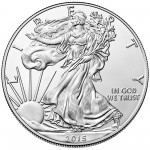 At the end of my last report on how the recent transportation bill will have an effect on coin collectors, I said that I would discuss how the new law will impact American Silver Eagle collectors. After taking a little time off for holiday festivities, we are going to look at the impact and unintended consequences of congress.
At the end of my last report on how the recent transportation bill will have an effect on coin collectors, I said that I would discuss how the new law will impact American Silver Eagle collectors. After taking a little time off for holiday festivities, we are going to look at the impact and unintended consequences of congress.
To review, earlier this month congress passed and the president signed the Fixing America’s Surface Transportation Act or the “FAST Act” (H.R. 22; now Public Law 114-94). It is a comprehensive transportation bill that is over 490 pages long with one third of those paged dedicated to items other than transportation. Buried deep in the document is Title LXXIII, “Bullion and Collectible Coin Production Efficiency and Cost Savings” section. For today’s post, we look at Section 73002:
Sec. 73002. American Eagle Silver Bullion 30th Anniversary
Proof and uncirculated versions of coins issued by the Secretary of the Treasury pursuant to subsection (e) of section 5112 of title 31, United States Code, during calendar year 2016 shall have a smooth edge incused with a designation that notes the 30th anniversary of the first issue of coins under such subsection.
If you are not familiar with “subsection (e) of section 5112 of title 31, United States Code” (31 U.S.C. § 5112(e)), it is the part of the law that authorizes the American Silver Eagle program. It says that these coins are to 40.6 millimeters in diameter containing 31.103 grams (one troy ounce) of .999 fine silver with a symbolic design of Liberty on the obverse and an eagle on the reverse.
Along with the prescribed elements the coin will have a reeded edge. It is this reeded edge requirement that may be causing a problem.
As written, Section 73002 does not say that the 2016 coin with a smooth edge with an inscription designating as the 30th anniversary of the first issue is for a special collectible. It is written as a blanket statement for all coins issued in 2016. Because of the word issued, the U.S. Mint is going to cancel the 2015 Limited Edition Silver Proof set.
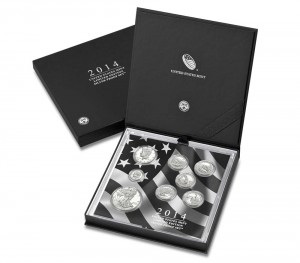
2014 Limited Edition Silver Set (LS3) will be on sale until December 30, 2015 at noon.
However, that word “issued” causes a problem. If the coins are part of a packaging production, the coins may not have been struck in 2016 but the sets are being issued in 2016, then the 2015 could be violating the law. It is that ambiguity in a law passed by congress that will cause the 2015 Limited Edition Silver Proof set from being released.
Sausage making at its finest!
Images courtesy of the U.S. Mint
Dec 24, 2015 | bullion, coins, legislative, palladium, US Mint
Our final saga of How the Congress Turns (our stomachs), we will finish looking at the technical changes added to the “Fixing America’s Surface Transportation Act” or the “FAST Act” (H.R. 22) will impact collectors. Back to Title LXXIII, Section 73001 we find:
Title 31, United States Code, is amended —
(1) in section 5112 —
. . .
(C) in subsection (v) —
(i) in paragraph (1), by striking Subject to and all that follows through the Secretary shall and inserting The Secretary shall;
(ii) in paragraph (2)(A), by striking The Secretary and inserting To the greatest extent possible, the Secretary;
(iii) in paragraph (5), by inserting after may issue the following: collectible versions of; and
(iv) by striking paragraph (8);
Remembering that technical changes instructs the Office of the Law Revision Counsel how to correct the law, to understand this change we have to look at the law (31 U.S.C. § 5112(v)) to find that this is a correction to the law about minting palladium bullion coins.
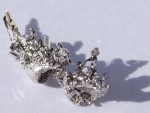
Palladium Nugget
The very first edit is to take away the wording that says to do the study and strike if there is a market to saying that palladium coins will be struck using as much palladium as can be found from United States sources. If there is a higher demand, the U.S. Mint can use sources outside of the U.S. to purchase palladium.
Finally, the last correction not only requires the U.S. Mint to strike palladium bullion coins but to also create collector versions.
-
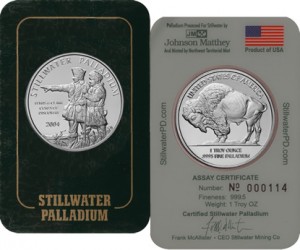
-
2004 Stillwater Palladium Rounds
-
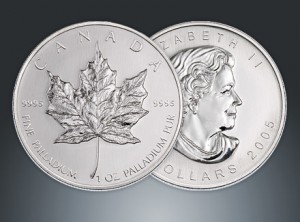
-
2005 Canada Palladium Maple Leaf
Palladium is a soft silvery metal like platinum. It is lighter than platinum (atomic number 46 versus 78) and similar to silver (atomic number 47). It has similar uses as silver including in electronics, compounded catalysts, jewelry, and coins. Palladium commands a higher price than silver because it is less available but less expensive than platinum, which is more difficult to mine.
The primary source of palladium in the United States is the Stillwater Mine in Montana. The mines, which also provides the U.S. supply of platinum group metals (PGM), is owned and operated by the Stillwater Mining Company. The American Eagle Palladium Bullion Coin Act was introduced by Rep. Dennis “Denny” Rehberg (R), Montana’s only member in the House of Representatives.
The final entry will discuss how the transportation bill and bad timing will affect American Silver Eagle collectors.
Dec 23, 2015 | coins, legislative, news, silver, US Mint
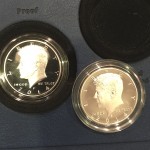 In our short saga of How the Congress Turns (our stomachs), we are going to look at the next and last provision of how the “Fixing America’s Surface Transportation Act” or the “FAST Act” (H.R. 22) will impact collectors. Returning to Title LXXIII, Section 73001 we find:
In our short saga of How the Congress Turns (our stomachs), we are going to look at the next and last provision of how the “Fixing America’s Surface Transportation Act” or the “FAST Act” (H.R. 22) will impact collectors. Returning to Title LXXIII, Section 73001 we find:
Title 31, United States Code, is amended —
(1) in section 5112 —
. . .
(B) in subsection (t)(6)(B), by striking 90 percent silver and 10 percent copper and inserting not less than 90 percent silver; and
. . .
(2) in section 5132(a)(2)(B)(i), by striking 90 percent silver and 10 percent copper and inserting not less than 90 percent silver.
The result of the corrections is to change the requirement to strike silver coins with a composition that contains 90-percent silver, to the requirement that the coins must contain at a minimum 90-percent silver. By making these changes, it allows the U.S. Mint to use pure silver planchets to strike coins.
The U.S. Mint has been asking congress to end the practice of requiring silver coins to be 90-percent silver. Earlier, it was learned that pure silver planchets would be cheaper to produce than to find the few suppliers who would create “dirtied” blanks.
Congress finally listened (for a change).
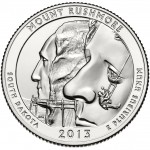 The change in the law happens in two parts. Paragraph (B) makes the change for the balance of the America the Beautiful Quarters Program including the 5-ounce bullion coin. Section (2) changes the Administrative part of the code (31 U.S.C. § 5132(a)(2)(B)(i)) that covers all other coins. A problem with the way these corrections were written it does not affect commemorative coin programs unless the U.S. Mint’s general counsel feels that this law covers all coins. While the U.S. Mint is likely to interpret the law the way that benefits them, the wording does not cover commemoratives.
The change in the law happens in two parts. Paragraph (B) makes the change for the balance of the America the Beautiful Quarters Program including the 5-ounce bullion coin. Section (2) changes the Administrative part of the code (31 U.S.C. § 5132(a)(2)(B)(i)) that covers all other coins. A problem with the way these corrections were written it does not affect commemorative coin programs unless the U.S. Mint’s general counsel feels that this law covers all coins. While the U.S. Mint is likely to interpret the law the way that benefits them, the wording does not cover commemoratives.
Missing from these corrections the similar language for gold coins. Unless the U.S. Mint will interpret the gold coin changes as permission to change the commemorative coin programs, gold coins will remain 90-percent gold.
As I write this I am reminded about famous quote by the first Chancellor of Germany Otto von Bismarck: “Laws, like sausages, cease to inspire respect in proportion as we know how they are made.”
Next, we introduce another collectible that congress has mandated to be produced by the U.S. Mint.
Mount Rushmore quarter image courtesy of the U.S. Mint.
Dec 22, 2015 | bullion, coins, gold, legislative, news
Over the last few years, congress has had this habit of waiting to the last minute to vote on legislation. When they do, they load up this legislation with seemingly unrelated stuff that it is no wonder their ratings are in the single digits.

2010 Somalia Sports Cars — Not the type of numismatic transportation we are talking about.
Title LXXIII of what is now Public Law 114-94 is short but has a big impact on the future for collectors. Rather than try to digest it all here, I will spend the next few days discussing the impacts. Starting with the technical corrections as part of Section 73001.
Technical corrections to a law is the process where congress votes on the wording changes that either clarifies or changes the limits of a law. It is written in a way that tells theOffice of the Law Revision Counsel, the editor of the United States Code (federal law), how to correct the law. In the case of the these corrections, it is instructing the Law Revision Counsel to edit the law (31 U.S.C. § 5112) that defines all the specification for U.S. coinage.
Today we begin with:
Title 31, United States Code, is amended —
(1) in section 5112 —
(A) in subsection (q) —
(i) by striking paragraphs (3) and (8); and
(ii) by redesignating paragraphs (4), (5), (6), and (7) as paragraphs (3), (4), (5), and (6), respectively;
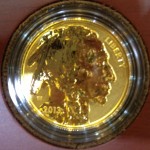
2013-W American Buffalo gold reverse proof obverse
Removing the CFA and CCAC from design decisions may be a good idea when producing coins based on classic design. However, if the U.S. Mint abuses this provision, there is no doubt that congress will yell, scream, call the U.S. Mint bad names, and put the provision back in the law.
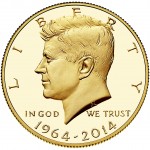 The change also removes any limits on mintages of 24-karat gold bullion coins allowing the U.S. Mint to produce as many to meet market demands. It will also allow the U.S. Mint to limit mintages on 24-karat gold bullion coins without asking for permission. This change just codifies current practice.
The change also removes any limits on mintages of 24-karat gold bullion coins allowing the U.S. Mint to produce as many to meet market demands. It will also allow the U.S. Mint to limit mintages on 24-karat gold bullion coins without asking for permission. This change just codifies current practice.
This first correction also removes paragraph (8) that requires protective covering, such as capsules for the coins. This will allow the U.S. Mint to package these coins for bulk sale as bullion coins adding to the potential for higher sales of gold coins. Although there has been no comment from the U.S. Mint, it is doubtful that they would sell collector versions of these coins in substandard packaging. That has not been their policy.
All that from just a few lines. Stay tuned because tomorrow we learn that congress actually did something right, for a change!
Image of the 50th Anniversary Gold Kennedy Half Dollar courtesy of the U.S. Mint.
Dec 5, 2015 | coins, Eagles, legislative, silver, US Mint
 I know that there is little the U.S. Mint can do without congress’s permission, but sometimes sifting through what congress is doing can be tiresome. There is so much good that congress can do but the political in-fighting is so insidious that all one can do is shake their head in disgust. At least there is one interesting item to report:
I know that there is little the U.S. Mint can do without congress’s permission, but sometimes sifting through what congress is doing can be tiresome. There is so much good that congress can do but the political in-fighting is so insidious that all one can do is shake their head in disgust. At least there is one interesting item to report:
H.R. 22: Developing a Reliable and Innovative Vision for the Economy Act
Sponsor: Sen. Rodney Davis (R-IL)
• Introduced: January 6, 2015
• Passed House of Representatives on January 6, 2015
• Passed Senate with amendments on July 30, 2015
• Conference report presented to Senate on November 5, 2015
• Conference committee convened November 18, 2015
• Of significance to numismatics:
- SEC. 73002. AMERICAN EAGLE SILVER BULLION 30TH ANNIVERSARY: Proof and uncirculated versions of ASE coins during 2016 shall have a smooth edge incused with a designation that notes the 30th anniversary of the first issue of coins.
Track this bill at https://www.govtrack.us/congress/bills/114/hr22
In other words, congress is mandating a 30th Anniversary American Silver Eagle set. I wonder if it will match the 25th Anniversary set?
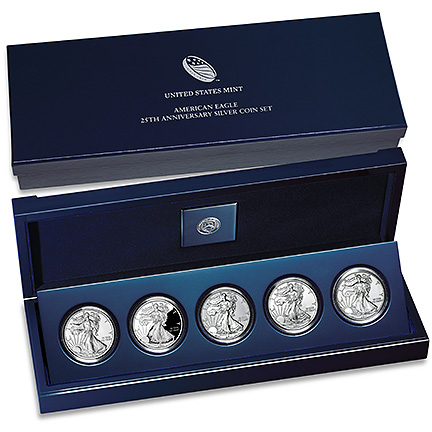
2011 American Silver Eagle 25th Anniversary Set
Image of American Eagle set courtesy of the U.S. Mint
Nov 24, 2015 | coins, commemorative, commentary, legislative, policy, US Mint
While reviewing my notes I noticed that I had this draft in my queue. Although drafted in July, I think the topic is still relevant.
In 2009, I wrote a six-part series “Reforming America’s Currency” out of frustration with how behind the United States is in its currency production process (not economic policy) as compared with the rest of the world. After all, the U.S. Mint and the Bureau of Engraving and Printing are the largest money manufacturers in the world. In Part 4, I wrote that the “first reform in commemorative coinage would be that no commemorative would be struck for the sole purpose of raising money for any organization. Regardless of how worthy the organization may be, the association of the commemorative with fundraising taints the process.”
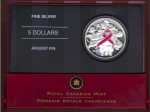
2006 Canada silver $5 Breast Cancer Commemorative Coin
In an astounding partisan move, some members of congress have chosen to display their political umbrage to try to derail a commemorative coin that has bipartisan support.
If you are not aware, the original version of H.R. 2722 would have given the proceeds to the Susan G. Komen for the Cure and the Breast Cancer Research Foundation. The argument was whether money raised by the commemorative should go to Komen. As a not-for-profit charitable corporation, Komen supports education and research to fight breast cancer. The organization, founded in 1983, has been one of the more successful organizations in education and providing research funds in the fight against breast cancer.
Komen is not without controversy. Most have been within the last 10 years when the organization has grown to such size and scope that some feel it may be more corporate driven than focused on its original mission. One of its controversies is its association with Planned Parenthood. Komen, who gives grants to organization for women cancer screenings, had been proving grants to Planned Parenthood earmarked for cancer screenings. Since Planned Parenthood has also had its share of controversies, social conservatives balked at the association.
More recently, Planned Parenthood has been accused of unethical practices regarding their medical-related practices. A video surfaced that claims someone at Planned Parenthood would be selling fetal tissue following abortions. It was a hidden camera video whose contents have not been verified. Although the video has some disturbing conversations, it is unknown whether this is an isolated incident or a policy followed by some.
Because of the politics surrounding the abortion issue, the policies of Planned Parenthood, and Komen’s support of Planned Parenthood’s cancer screening programs, Komen was open to attack by right wing demagogues looking to score political points rather by using the concept of guilt by association rather than rational thinking.
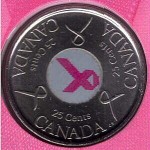
Canada’s non-controversial 2007 25-cent Breast Cancer circulating coin
Komen may have its controversies but the debate on this issue is beyond the pale. Their mission is for education and cancer research. Their mission should be as non-partisan as anything in this country. Cancer does not discriminate. Cancer will attack anyone at any time for any reason regardless of affiliation outside of being a sentient being.
To bring any other issue into the discussion, regardless of where you fall on the political spectrum, shows congress’s immaturity and that the basic function of raising money using commemorative coins should be discontinued immediately.
Some will be upset over my discussion of politics, but politics are part of the coin making process since the U.S. Mint cannot do much without permission. I also both sides of the issue, but for this debate, I do not care. When you have to go three-degrees of separation to dig up an issue in an unrelated political debate, it gets frustrating. It is yet another illustrations as to why I am against using commemorative coins to raise money for any cause regardless of how I feel about the cause—and I have personal reasons for being in favor of cancer research and education. This debate should have NEVER devolved into a discussion about abortion. The fact that it did stoop to those depths proves that congress needs to get out of the commemorative coin business. It will be one less area they can mess up.
Nov 5, 2015 | coins, commemorative, legislative, policy, US Mint
 Those who follow politics has watched the machinations that the House of Representatives went through before picking Rep. Paul Ryan (R-WI) as the 54th Speaker of the House of Representatives. During that time, not much else happened outside of the requisite budget battles. But there was one bill introduced that may be of interest:
Those who follow politics has watched the machinations that the House of Representatives went through before picking Rep. Paul Ryan (R-WI) as the 54th Speaker of the House of Representatives. During that time, not much else happened outside of the requisite budget battles. But there was one bill introduced that may be of interest:
S. 2185: Breast Cancer Awareness Commemorative Coin Act
Sponsor: Sen. Heidi Heitkamp (D-ND)
• Introduced: October 20, 2015
• Referred to the Senate Banking, Housing, and Urban Affairs Committee
• Summary:
- 2018 Commemorative program
- 50,000 $5 “pink gold” coins with $35 surcharge
- 400,000 silver $1 coins with $10 surcharge
- 750,000 clad half-dollars with $5 surcharge
- Surcharge paid to Breast Cancer Research Foundation for the purpose of furthering breast cancer research
Track this bill at https://www.govtrack.us/congress/bills/114/s2185

iPhone 6S in Rose Gold
If you think that this bill looks very much like H.R. 2722, you are a very perceptive person. The only difference between this bill and H.R. 2722 is the specification to use “pink gold.” Pink gold is actually “rose gold,” which has a pinkish hue. For the record, Apple’s new iPhone 6S comes in rose gold that looks more pink that “rose.”
Speaking of budget bills, one of those bills, S. 2132, has been reported out of committee and waiting for a Senate vote. What is significant about the bill is that it outlines how much money the U.S. Mint can withdraw from the Public Enterprise Fund, the account where the seigniorage from all coin sales is deposited. The bill states:
United States Mint – United States Mint Public Enterprise Fund
Pursuant to section 5136 of title 31, United States Code, the United States Mint is provided funding through the United States Mint Public Enterprise Fund for costs associated with the production of circulating coins, numismatic coins, and protective services, including both operating expenses and capital investments: Provided, That the aggregate amount of new liabilities and obligations incurred during fiscal year 2016 under such section 5136 for circulating coinage and protective service capital investments of the United States Mint shall not exceed $20,000,000.
iPhone image courtesy of Apple.
 At the beginning of the month I usually summarize the numismatic-related legislation from the previous month. In March, congress spent two weeks on spring break and before that they were more concerned over what to do when the president nominated someone to the Supreme Court. Interestingly, the nomination came just as congress went on spring break.
At the beginning of the month I usually summarize the numismatic-related legislation from the previous month. In March, congress spent two weeks on spring break and before that they were more concerned over what to do when the president nominated someone to the Supreme Court. Interestingly, the nomination came just as congress went on spring break.














